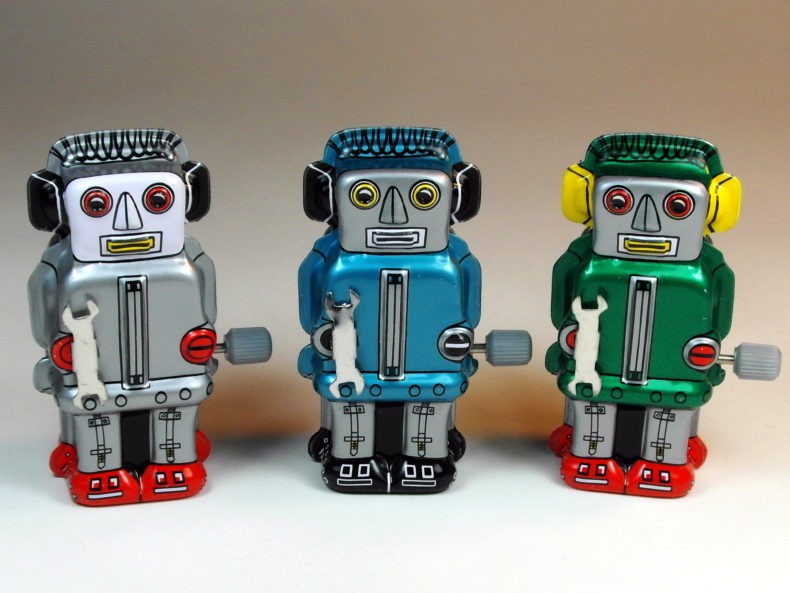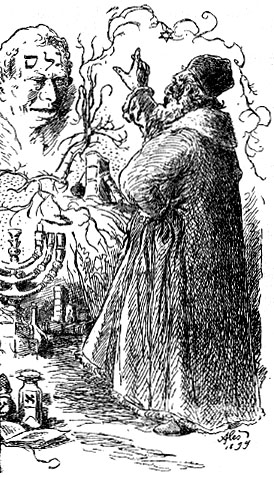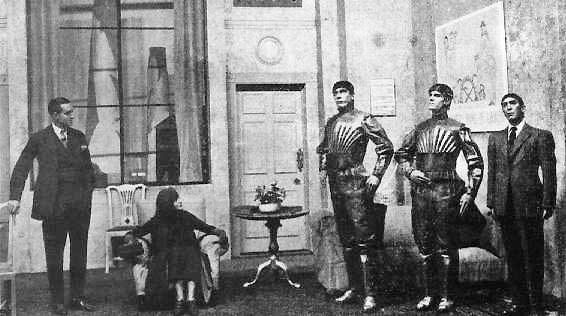
In Jewish folklore there’s a thing called a golem — a creature created by magic to serve its creator. There are lots of variations on the golem story, but the way I learned it goes like this: to bring a golem to life you form it out of dirt and then walk around it several times while chanting certain letters of the alphabet. Walking the other way around, saying those same letters and words backwards, kills the golem.
A few months ago I was listening to a podcast I love called Spirits Podcast which is all about mythology, legends and lore. And buried amidst their discussion of golems with Eric Silver, he mentioned that the modern version of the golem is the robot.
This totally blew my mind! I still think about it. So I’m here to share this idea with you.
 The most famous golem in history comes from Prague. According to the story, there was a rabbi named Judah Loew ben Bezalel, aka the Maharal. The Maharal lived in Prague in the late 16th century, when antisemitic sentiment was rampant. Non-Jews believed that Jews killed babies and put them in their matzo, and Prague was on the brink of new leadership that was even more hostile to the Jews than the previous one. So the Maharal decides to take matters into his own hands, and create a golem to protect his people. The story goes that the Maharal crated his golem, named Josef, and the golem patrolled the Jewish ghettos to keep them safe from attacks from the outside.
The most famous golem in history comes from Prague. According to the story, there was a rabbi named Judah Loew ben Bezalel, aka the Maharal. The Maharal lived in Prague in the late 16th century, when antisemitic sentiment was rampant. Non-Jews believed that Jews killed babies and put them in their matzo, and Prague was on the brink of new leadership that was even more hostile to the Jews than the previous one. So the Maharal decides to take matters into his own hands, and create a golem to protect his people. The story goes that the Maharal crated his golem, named Josef, and the golem patrolled the Jewish ghettos to keep them safe from attacks from the outside.
But then something goes wrong — in one version the golem falls in love and is rejected, in another version the Maharal forgets to turn the golem off during the Sabbath, and in others there’s no explanation at all — and the golem goes off the rails. There are plenty of endings to the story too, in some the rabbi neutralizes the golem easily, in others the golem goes on a rampage and murders a bunch of people before being felled. No matter what, at some point the golem has to be turned off eventually. With great power comes great responsibility, and all of that.
So what does this have to do with robots, you ask? Well here’s how Eric describes the connection between a golem and a robot: “The other thing which is actually really cool about the golem is that he’s the inspiration for robots. So the word robot actually comes from two Czech brothers Josef and Karel Čapek who were living in Prague. It’s called R.U.R., and it’s about the first robot creating something sentient out of metal. And it’s literally, that’s where the word robot comes from is this play and story.”

If you’re not familiar with the play R.U.R. (which stands for Rossumovi Univerzální Roboti or Rossum’s Universal Robots) it’s a 1920’s science fiction play about a factory that makes humanoid figures. The “robots” in R.U.R. aren’t really what you or I would imagine when we think of robots. They’re actually more like clones. Or, really, more like golems. But either way, the word “robot” comes from this play.
In R.U.R. (spoiler alert, but this play was written in 1920 so I really don’t feel bad about it) the robots eventually rise up and reject working for humans. And their rebellion leads to the end of the human race.
So once again, you may be asking, what do robots have to do with golems? Well, the most famous golem comes from Prague, and in the early 1900’s Prague’s literary circles seemed to have had a kind of obsession with golems. Which means that the concept of the golem — an artificial creature brought to life by human magic — would certainly have impacted the Čapek brothers as they worked on the script of R.U.R..
According to an essay by Klaus Benesch, a professor of North American Studies, the golem is “an ancient equivalent for automaton or robot.” According to Kay E. Vandergrift of Rutgers University, “a golem frequently took the form of a robot, or automaton.” In an article from the International Journal of Humanoid Robotics, Frederic Kaplan writes that “the Golem illustrates how Man can imitate divine creation through research and science.” And just like the Maharal’s protector, and the R.U.R. humanoid servants, a golem unchecked can lead to destruction. “Golem stories were reinterpreted from this perspective, describing how the artificial servant becomes an uncontrollable creature that destroys everything along the way,” writes Kaplan.
And the golem concept is certainly still informing roboticists today, at least in name. In 2010, a roboticist at Georgia Tech created a humanoid torso they named Golem Krang. I choose to believe that the “Krang” part of the name comes from the 1980’s Teenage Mutant Ninja Turtle cartoon. Which makes sense, because Krang was basically a brain in a robot body. Anyway… At Brandeis University, researchers have named a project on the evolution of machines after the golem. In 2007, a team called the Golem Group entered the DARPA competition to build a set of autonomous vehicles.
So the golem is a magical creature, a thing brought to life by human spirit and ingenuity. It’s a creature that listens to our commands, that protects humans and does as we say. This has long been our dream with robots too. And the fears here are the same as well: what happens when the creature no longer wants to obey. What happens if it falls in love and is rebuffed? What happens if we forget to turn the robot off? Whether it’s a mud monster or an adorable orb assistant, these are the questions we’re still asking.
But have today’s robots graduated from golemdom? According to Eric, “golems do not have souls, and they can’t speak.” Robots have certainly surpassed the latter of those barriers, and the former is certainly something people are working on. Or perhaps it’s not a soul that makes a robot graduate from the land of the golem, maybe it’s when we stop being afraid of our creature deciding to do its own thing.
Tin Wind Up – Tiny Zoomer Robots via D J Shin
Rabbi Loew and Golem by Mikoláš Aleš, 1899.
R.U.R. image via Wikipedia.
Fascinating! So many parallels with Frankenstein that it makes me wonder if the monster was a Gentile golem — if Mary Shelley knew the legends and adapted them, that is.
Yes! Frankenstein is definitely part of the golem literary canon. There are some really interesting things written about that: http://www.nytimes.com/1988/12/04/arts/about-arts-golem-medieval-hero-frankenstein-monster-proto-computer.html